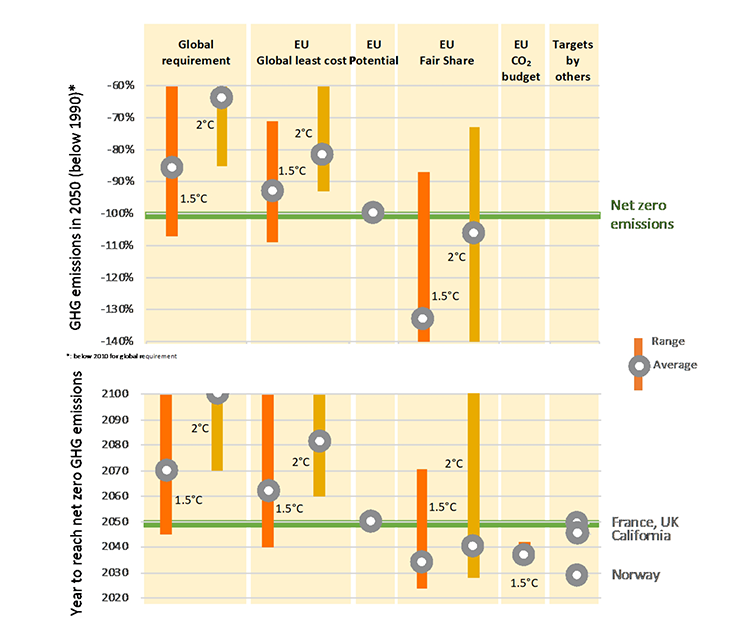This study assesses the EU's 2050 target, i.e. halving global emissions by 2050 to be in line with 2°C, in today's setting to evaluate if the target, which was set ten years ago, is still appropriate and/or sufficient. It offers recommendations for the EU to aim for more ambitious targets.
Key findings:
The EU’s 2050 greenhouse gas reduction target of 80% to 95% from 1990 levels adopted 10 years ago is outdated as its basis has changed substantially. The global goal agreed in Paris in 2015 is more ambitious and pathways to that goal are now steeper not only because of the more ambitious goal but also because global emissions have increased since then.
An 80% reduction of greenhouse gas emissions by 2050 compared to 1990 levels for the EU is not compatible with the long-term temperature limit of the Paris Agreement. Also, the 95% reduction and even GHG neutrality by 2050 are not ambitious enough to be a fair contribution of the EU to many interpretations of the Paris Agreement.
The EU has already spent its fair share of GHG emissions and would need to reduce GHG emissions to zero almost immediately (by 2030 - 2040) to leave room for other countries with less historical responsibility and capability to emit the very limited remaining budget, which obviously would be technically challenging (Figure 1). This result is based on a comprehensive review of studies that allocate emissions to countries based on equity principles.






